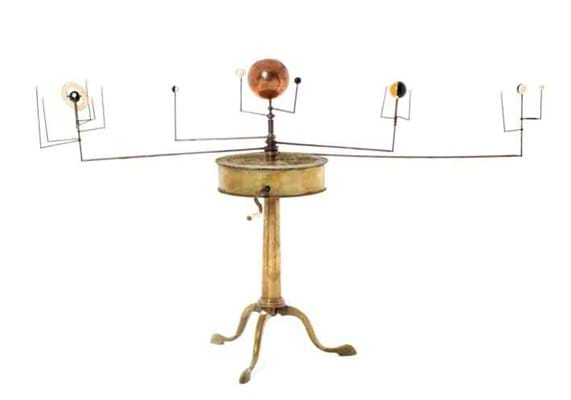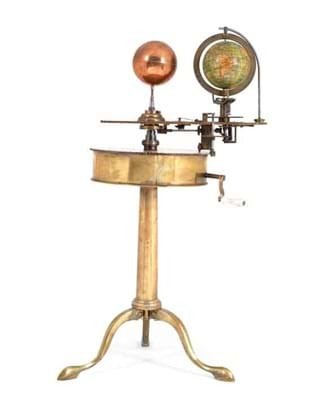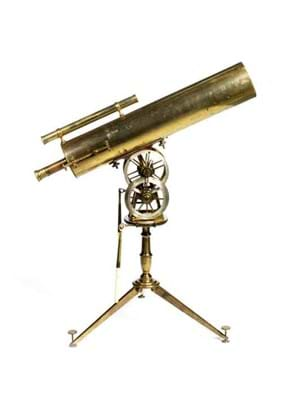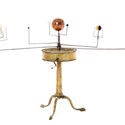The object was later universally accepted as a new planet and Herschel named it Georgium Sidus (George's Star), or the 'Georgian Planet', in honour of his new patron, King George III. Although this was a popular name, astronomers preferred to follow the historical precedent of naming planets after ancient Greek and Roman gods - Uranus was the father of Saturn.
The planetarium and tellurian, which was offered in the scientific, technological and mechanical musical instruments sale at Bonhams Knightsbridge on May 20, has the brass drum with winding aperture at the side mounted on top with circular plate, with racked circumference and engraved with calendar, degree and zodiac scales together with astronomical data.
It is signed G ADAMS, Mathematical Instrument Maker TO HIS Majesty Fleet Strt. LONDON. It also has engraved details of comets and planets: This Comet appeared in the year 1661. This Comet appeared in 1682 and again in 1758 its Period is 75 1/2 Years. This most Remarkable Comet appeared in the Year 1680 its Period is 575 Years. Orbit of the new Georgian Planet, its Period is 32850 Days.
The drum is 8½in (21.5cm) diameter and the overall height is 23in (59cm).
On the day, it went well beyond an estimate of £30,000-40,000 to sell for £95,000.
Dollond Telescope
Meanwhile, a 5in (13cm) Gregorian reflecting telescope on stand, English, late 18th century, unsigned but attributed to Dollond, sold for a low-estimate £18,000 at Bonhams.
Engraved with the monogram BD surmounted by a falcon with spurs, it is in the original heavily brass-mounted oak case made for long distance travel, the tube measuring 2ft 1in (64cm) long.
The buyer's premium was 20%.











